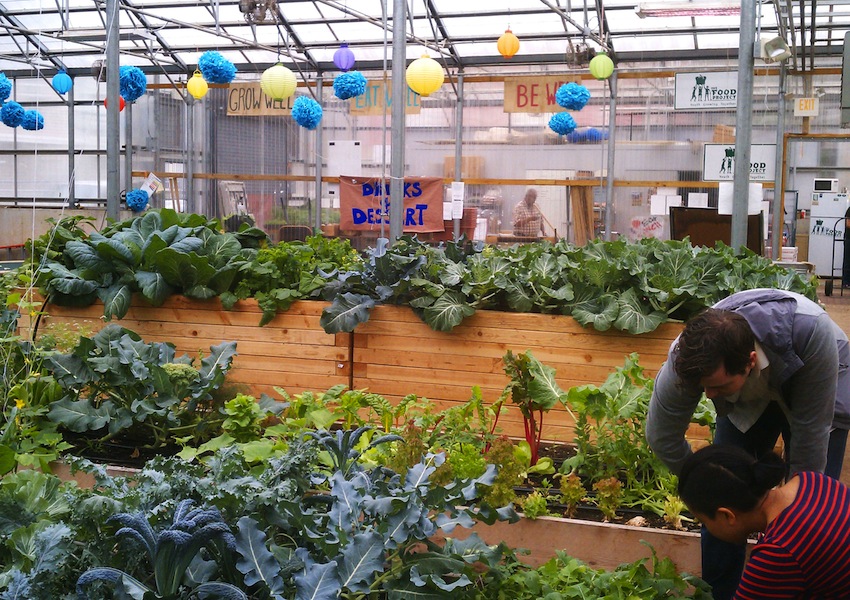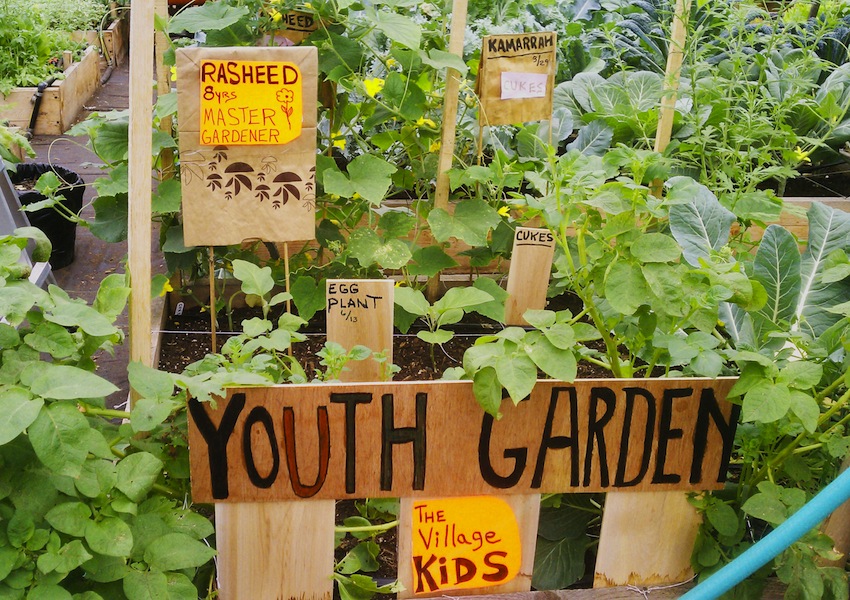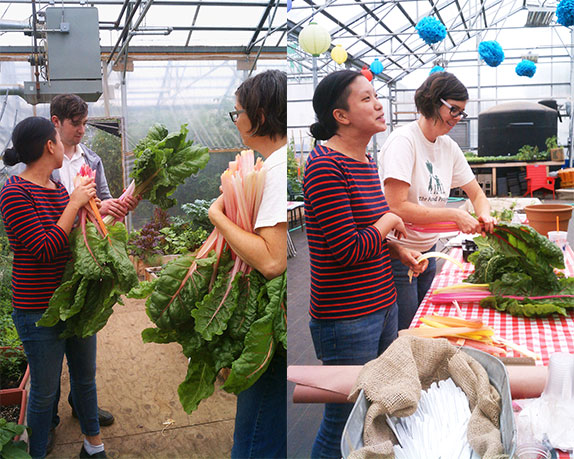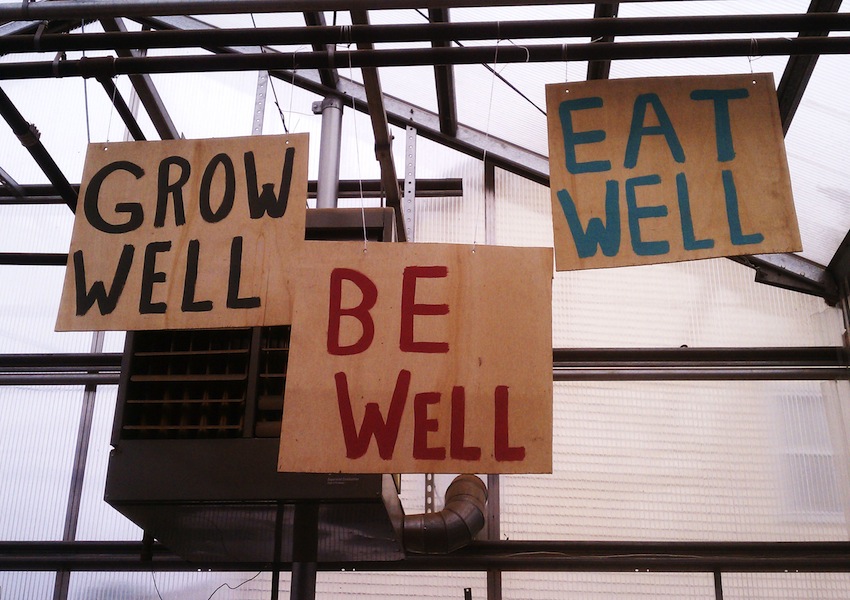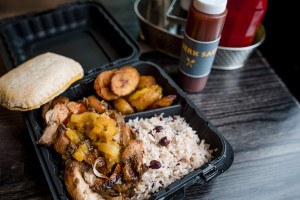A Greenhouse Grows in Dudley: Visiting The Food Project with Mei Mei Street Kitchen
Welcome to Supply Chain, where we go behind the plate to get a feel for the day-to-day of Boston’s most relied-upon restaurant purveyors.
It’s a typical Thursday in an East Coast June—all bluish gray clouds and warm, muggy wind, the occasional spit of a heavy raindrop—and as I turn down Brook Avenue in Roxbury, it’s only a few steps before I see why I’m here: The Food Project’s 10,000 square foot greenhouse, appearing like a mirage amidst rows of flowers exploding along the street.
Inside, Max Hull and Irene Li of the soon-to-be-brick-and-mortar incarnation of Mei Mei Street Kitchen are chatting with Boston greenhouse manager Danielle Andrews. She’s sorting through crates of tomatoes, some destined for City Feed in Jamaica Plain, passing them to a few fresh-faced interns who wash off the dirt in sinks behind her.
Brandy Brooks, the Boston regional director, shows up, and as we prepare to head out TFP’s West Cottage Farm a few blocks away, Hull comes over and offers us some cilantro flowers, little puffs of white blossoms in the palm of his hand. We all take one, and a shot of pure, concentrated cilantro flavor races over my tongue.
“I can’t stop eating them!” he says, popping the last few back as we head out of the greenhouse.
“I told him he had to come because he’s always the one who will be combing through everything and eating it,” Li says, grinning. As we walk, he strings along behind us, plucking leaves off of low-hanging branches.
The Food Project was founded in 1991, borne out of the friendship between a white farmer in Lincoln and a black pastor in Somerville. After doing some farming together, Ward Cheney and Allen Callahan wondered if a shared plot of land might be the link to bring their respective communities together.
It began with the summer youth initiative, now in its 22nd year, and a partnership with Drumlin Farm in Lincoln. Since then, the Lincoln farm has expanded to 31 acres, in addition to seven acres in Beverly, one acre in Lynn, and two in Boston (an acre on Langden Street and an acre on West Cottage).
As we look out over West Cottage farm, Brooks tells me they’ve been farming here for a little over 15 years. There’s a patch devoted to everything you can imagine, including an area set aside for a community garden in the far corner.
Over the course of any given year, TFP works with around 3,000 volunteers—individuals and groups—who come to pull weeds and plant seeds in the spring and fall. For the first time, summer volunteer slots are becoming available as well.
Volunteering kick-started Mei Mei Street Kitchen’s tie to the organization; before the truck found its wheels, Li was unemployed, living at Mom’s house, and looking for a chance to be outside.
“Plus, I didn’t want to buy a gym membership,” she says, laughing. “I thought that doing some farm work would be a really cool way to meet people and make connections for the truck.”
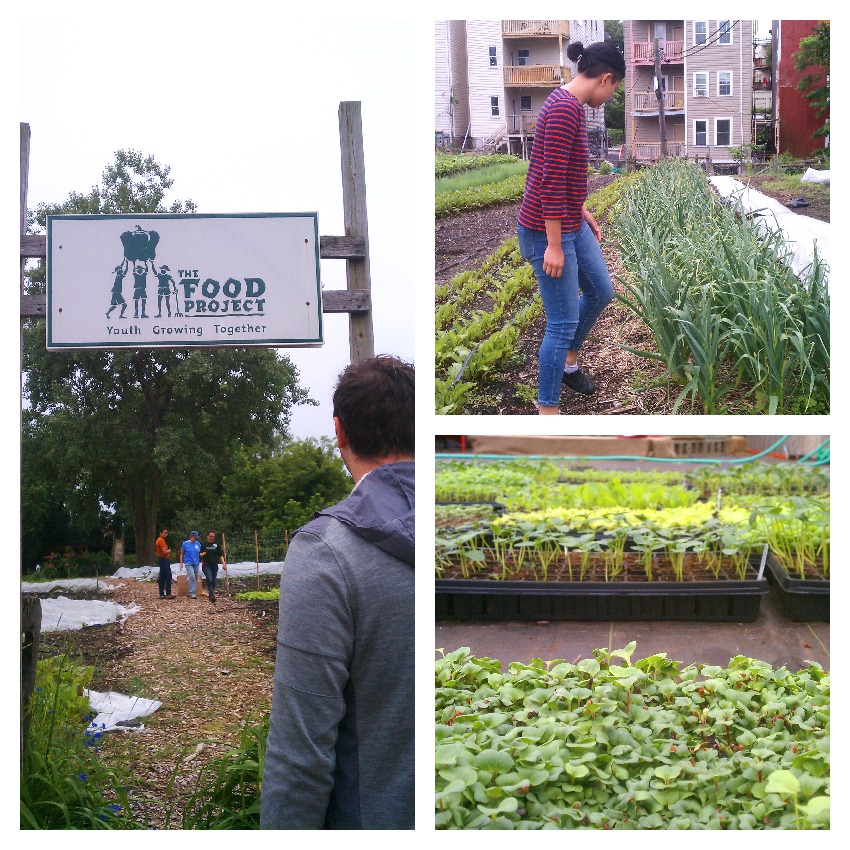 She stopped by every Tuesday and Thursday, harvesting produce alongside young interns and different businesses completing community service days. The experience led to both the truck’s first real employee (a referral through Jess Liborio, the community outreach manager), and a solid relationship with a local producer whose ideals matched hers exactly.
She stopped by every Tuesday and Thursday, harvesting produce alongside young interns and different businesses completing community service days. The experience led to both the truck’s first real employee (a referral through Jess Liborio, the community outreach manager), and a solid relationship with a local producer whose ideals matched hers exactly.
“I feel like contributing to a healthier local food system is a very explicit part of our business,” she says. “I don’t know if everyone else feels that way, but for me, it’s the number one reason why I do what I do.”
While the truck’s produce isn’t always solely supplied by TFP—“We’re opportunists,” Li explains, “When they have it, we’ll gladly take it”— their shared mission of food justice fuels their connection.
“The ideal for me would be if regardless of what you look like, your national background, the language you speak or the income that you bring in, you never have an issue getting access to healthy, fresh food,” Brooks posits, as we meet up again on the sidewalk. “But more than that, we need to reach food sovereignty. That takes it to another level. Knowing how to do this on your own really opens it up.”
“It puts us in an interesting position, as people in an industry with a hand in all that,” Hull says, nodding. “One of the things that we’ve tried to do with the truck is to bring food that is local and fresh to a price point that is much lower than what you would normally find. Obviously, that’s a very, very, small step in what we hope is the right direction.”
TFP’s work with chefs is somewhat of a recent development, according to Andrews. While they had always put on Farm Lunches with guest chefs throughout the years, now they provide around 15 area restaurants (in addition to Mei Mei Street Kitchen) with produce, among them Coppa, Flour, Hungry Mother, and Henrietta’s Table.
“There had been restaurants in touch with us over the years about sourcing, but we never felt we could handle it along with the CSA programs and farmer’s markets,” she says. “Once we started specializing with the greenhouse, it was much easier to take on.”
Back at said greenhouse (which has been in production since 2011), we tour the community beds; a fairytale tangle of curling pea plants, bold, dark sprays of Lacinato kale, and small pops of yellow and purple blooms on their way to becoming cucumbers and eggplants. Li and Hull lust after a particular patch of gargantuan rainbow chard, discussing plans to pickle the stems.
The second half of the room makes our jaws drop—we’re dwarfed by rows and rows of tomato plants reaching towards the ceiling along a pulley system. The tomatoes ripening at eye level are the size of softballs, and they’ve only been at it since March. Li and Hull take off down the aisles, completely engulfed by dark green leaves. It’s hard to believe anyone would need hard convincing to get on the TFP train, but Andrews explains that costs don’t always allow for the furthering of their goals.
“Our presentations were based on, you know, ‘You want to support the local economy, you want to support youth, jobs!’…that kind of thing,” she continues. “But we found that quality was the most important factor to many of them, not necessarily the social benefit. It’s a tough bottom line.”
“I think for a lot of chefs, flavor and the quality of the food is the absolute most important thing. Sometimes that means sourcing local food, but a lot of the time that also means getting turnips from California,” Li adds, nodding. We’re splitting a tomato, taking bites out of it like an apple and passing it back and forth. “It’s hard. But before we opened the food truck, I had spent more time pulling weeds and washing vegetables than I had in a kitchen, so for us it wasn’t much of a question that we would try to make it work.”
On the bus ride home, two young TFP volunteers discuss environmental awareness and food sustainability with staggering earnestness. I can tell I’m not the only one listening in. I notice a few stray tomato seeds on my pants as the skies open up and rain pounds the streets.
